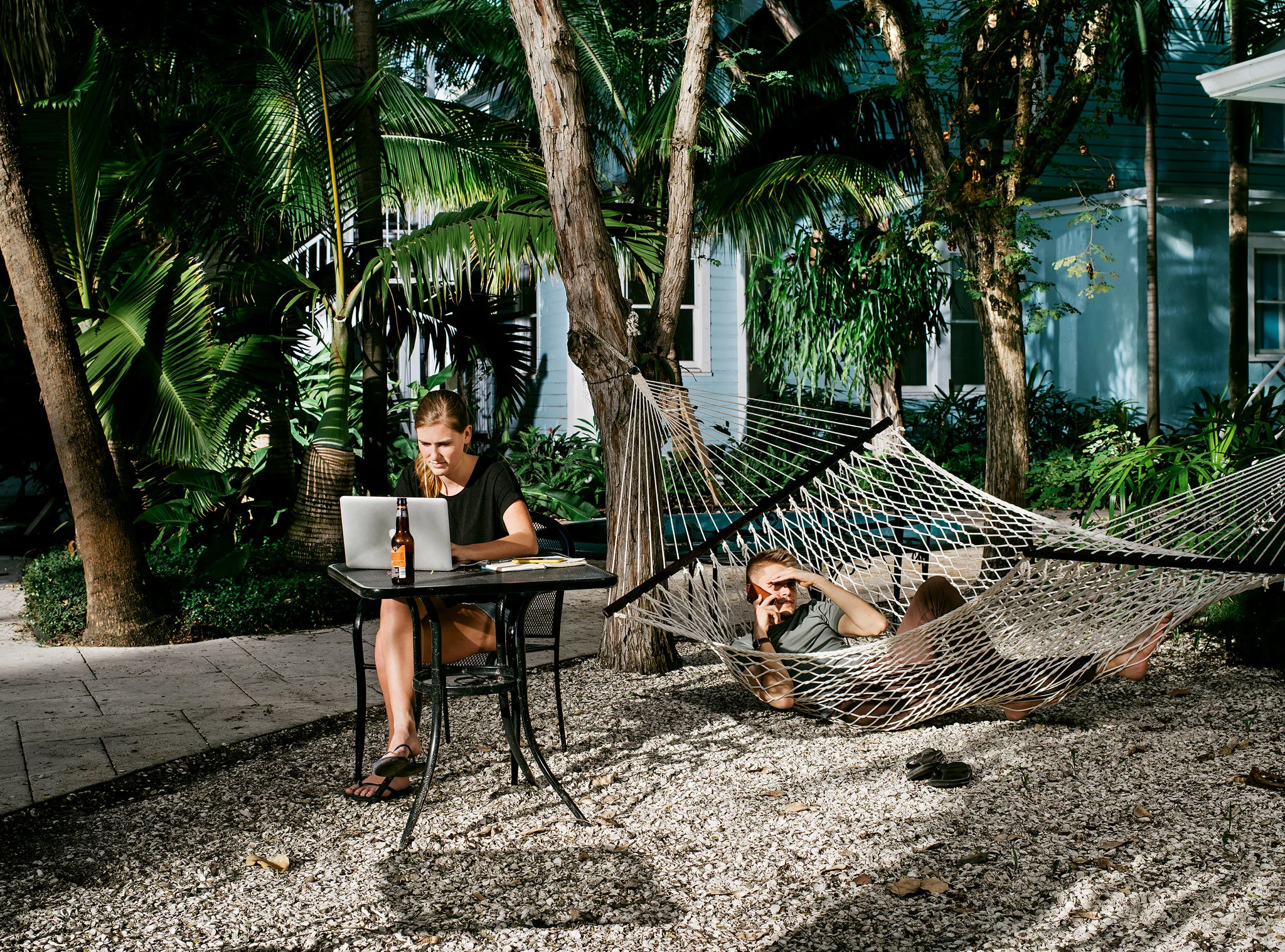Bleisure Travel: Blending Business with Bucket Lists in 2025
Bleisure travel, merging business with leisure, has reshaped professionals’ approach to work travel in 2025. This transformative trend not only maximizes business trips for personal enjoyment but also reflects the evolving desires for work-life balance. This article delves into the phenomenon, examining its growth, demographics, driving factors, and the corporate world’s response.
What is Bleisure Travel?
Bleisure travel—a fusion of business and leisure—has redefined corporate mobility, transforming rigid work trips into opportunities for personal enrichment. Unlike traditional business travel, where the focus is solely on meetings and deadlines, bleisure allows professionals to extend their stays, explore destinations, and tick off bucket-list experiences. The term itself, a portmanteau, reflects the seamless integration of work and play, with variations like bizcation emphasizing the leisure component.
The concept isn’t entirely new—executives have long added weekends to work trips—but its formalization and explosive growth stem from shifting workplace dynamics. Remote work policies, flexible schedules, and a generational demand for work-life balance have normalized bleisure as a strategic perk. Companies now recognize its value in employee satisfaction and retention, while travelers leverage it to maximize time and reduce personal travel costs.
Technological advancements have further enabled this trend. Digital nomadism, powered by cloud-based tools and coworking spaces, allows professionals to blend productivity with exploration effortlessly. Meanwhile, travel platforms have adapted, offering tailored bleisure packages that combine corporate logistics with curated leisure activities.
The rise of bleisure also reflects broader cultural shifts. Millennials and Gen Z, who prioritize experiences over material wealth, drive demand for meaningful travel. Destinations capitalize on this by promoting extended-stay incentives, from visa waivers to local immersion programs.
Distinct from traditional business travel, bleisure is characterized by intentional planning—whether it’s scheduling meetings early to free up afternoons or booking flights with strategic layovers. It’s not just an add-on; it’s a deliberate reimagining of how work and life intersect on the road. As we look ahead, bleisure isn’t merely a trend—it’s the new standard for global professionals.
The 2025 Market Overview
The bleisure travel market in 2025 has surged to unprecedented heights, driven by evolving workplace norms and a growing appetite for work-life integration. Valued at $1.2 trillion globally, the sector has seen a 25% year-over-year growth since 2022, outpacing traditional business travel by a significant margin. Analysts project this trajectory to continue, with estimates suggesting a compound annual growth rate (CAGR) of 18% through 2030, fueled by hybrid work policies and corporate flexibility.
Key economic indicators reveal bleisure’s outsized impact. The average bleisure traveler extends their trip by 3.5 days, injecting an additional $750–$1,200 per trip into local economies. Airlines and hotels have capitalized on this trend, with 43% of corporate travel bookings now including leisure add-ons, up from just 22% in 2020. Hospitality giants report that bleisure guests spend 30% more than traditional business travelers, prioritizing premium experiences like spa treatments, gourmet dining, and guided tours.
Tech advancements have further accelerated adoption. AI-driven platforms like BleisureHub and TripFusion curate personalized itineraries, blending meetings with bucket-list activities—think morning negotiations followed by afternoon helicopter tours. Meanwhile, expense management tools now seamlessly separate deductible costs from leisure splurges, easing compliance headaches for employers.
The ripple effects extend beyond tourism. Cities like Dubai and Barcelona have launched bleisure-friendly infrastructure, from co-working spaces in resorts to after-hours cultural passes for business visitors. With global workforces increasingly untethered, bleisure isn’t just a trend—it’s redefining how economies leverage the intersection of productivity and wanderlust.
Demographic Dynamics
The bleisure travel market in 2025 is being shaped by distinct demographic dynamics, with millennials leading the charge. Accounting for over 60% of bleisure travelers, this generation prioritizes experiences over material possessions, seamlessly blending work commitments with personal exploration. Surveys reveal that 78% of millennial business travelers extend their trips for leisure, compared to just 52% of Gen X and 35% of Baby Boomers. This disparity underscores a generational shift in work-life priorities, where younger professionals view business travel as an opportunity to check off bucket-list destinations.
Industry-wise, tech, consulting, and finance dominate bleisure participation, with 45% of tech professionals incorporating leisure into work trips—the highest among all sectors. The nature of these jobs, often involving remote collaboration and flexible schedules, enables employees to leverage travel time for personal enrichment. Meanwhile, healthcare and manufacturing lag behind, with rigid schedules and on-site demands limiting bleisure opportunities.
Gender also plays a role: women constitute 55% of bleisure travelers, often prioritizing safety and cultural immersion when selecting destinations. Solo female travelers, in particular, are driving demand for bleisure-friendly accommodations, such as hotels with co-working spaces and curated local experiences.
The demographic breakdown reveals a market increasingly tailored to younger, experience-driven professionals. As companies recognize the retention benefits of bleisure—67% of millennials report higher job satisfaction when allowed to blend work and leisure—employers are formalizing policies to support this trend. This shift is reshaping travel offerings, from loyalty programs to corporate travel budgets, ensuring bleisure remains a cornerstone of modern business travel.
Driving Forces Behind Bleisure
The rise of bleisure travel in 2025 is driven by a convergence of factors reshaping how professionals approach work and leisure. At its core, the search for work-life balance stands out as a primary motivator. Employees, particularly in high-stress industries, are leveraging business trips as opportunities to decompress, explore new destinations, and return to work rejuvenated. This shift aligns with broader societal trends prioritizing mental health and personal fulfillment.
Cost efficiency also plays a pivotal role. Combining business and leisure travel reduces expenses for both employees and employers. Travelers save on personal vacation costs by utilizing company-covered flights or accommodations, while companies benefit from higher employee satisfaction without additional overhead. The flexibility of remote work further accelerates this trend, as professionals no longer need to rush back to an office, enabling seamless transitions between work and leisure.
Technological advancements have removed logistical barriers. AI-driven travel platforms now curate personalized bleisure itineraries, blending meeting schedules with local experiences. Meanwhile, collaboration tools allow travelers to stay productive from anywhere, making extended stays feasible. The travel industry has responded with tailored offerings, such as hybrid hotel packages featuring workspace amenities and guided leisure activities.
- Work-life integration: Professionals seek meaningful experiences beyond traditional 9-to-5 routines.
- Economic pragmatism: Shared costs make extended trips financially viable.
- Tech-enabled convenience: Seamless connectivity and planning tools empower bleisure travelers.
As these forces intertwine, bleisure evolves from a niche perk to a mainstream expectation, setting the stage for corporate policies to formalize its adoption—a natural progression explored in the next chapter.
Corporate Adaptation to Bleisure
Corporate Adaptation to Bleisure:
As bleisure travel solidifies its place in the modern work landscape, companies are proactively adjusting their policies to accommodate this hybrid approach. Recognizing the dual benefits of employee satisfaction and operational efficiency, forward-thinking organizations are rewriting their travel guidelines to encourage extended stays. Flexibility is the cornerstone of this shift, with businesses allowing employees to tack on personal days to business trips without bureaucratic hurdles.
Many corporations now offer structured bleisure policies, including:
- Travel cost optimization: Allowing employees to cover only the differential cost of extending their return flights, rather than penalizing them for itinerary changes.
- Accommodation flexibility: Partnering with hotels or rental services that offer extended-stay discounts, enabling seamless transitions from work to leisure.
- Well-being incentives: Incorporating bleisure into wellness programs, framing it as a mental health benefit that reduces burnout and boosts productivity.
Tech giants and startups alike are leading this cultural evolution, with some even integrating bleisure into their employer branding strategies. Remote work tools—already entrenched from the digital nomad wave—are being fine-tuned to support bleisure, ensuring employees remain productive while exploring new destinations.
This shift isn’t just about perks; it’s a strategic realignment. Companies see bleisure as a retention tool, especially for younger talent prioritizing experiences over rigid schedules. By blending business with leisure, employers signal trust and modernity—a stark contrast to the rigid, expense-report-heavy travel norms of the past. The result? A workforce that’s more engaged, refreshed, and loyal, proving that corporate adaptation to bleisure isn’t just trendy—it’s smart business.
Economic Implications and Benefits
The rise of bleisure travel in 2025 is reshaping the economic landscape of the travel and hospitality sectors, creating new opportunities for growth and innovation. Hotels, airlines, and local businesses are adapting to this trend by offering tailored services that cater to the unique needs of bleisure travelers. For instance, hotels now provide flexible check-in/out times and hybrid workspaces, while airlines bundle business-class perks with leisure add-ons like discounted sightseeing tours. These adaptations not only enhance the traveler experience but also drive revenue for service providers.
Local economies benefit significantly as bleisure travelers extend their stays, spending on dining, entertainment, and cultural activities. A study by the Global Business Travel Association found that bleisure travelers spend 30-40% more than traditional business travelers, injecting vitality into tourism-dependent regions. Cities are capitalizing on this by promoting extended-stay packages and local experience partnerships, fostering deeper connections between visitors and destinations.
For companies, bleisure travel presents cost-saving opportunities. By allowing employees to combine business and leisure trips, firms reduce the need for multiple separate travels, cutting expenses on flights and accommodations. Additionally, employees often cover their leisure extensions, further lowering corporate travel budgets. This model also boosts employee satisfaction, indirectly improving productivity and retention—a win-win for businesses.
However, the growth of bleisure travel demands careful balancing. While it stimulates economic activity, over-tourism in popular destinations remains a concern. The industry must innovate sustainably, ensuring that bleisure’s economic benefits are distributed equitably without straining local infrastructure. As bleisure becomes the norm, its economic ripple effects will continue to redefine how businesses and destinations engage with modern travelers.
Technological Enablers
The rise of bleisure travel in 2025 is inextricably linked to advancements in technology, which have dismantled traditional barriers between work and leisure. Mobile applications now serve as the backbone of this hybrid travel model, offering integrated solutions for itinerary management, expense tracking, and local experiences. Platforms like TripIt and Expensify allow travelers to seamlessly transition from business meetings to bucket-list activities, while AI-driven tools like Google Travel suggest personalized leisure options based on real-time schedules and preferences.
Virtual conferencing tools, such as Zoom and Microsoft Teams, have evolved beyond mere meeting facilitators. With features like augmented reality (AR) integrations and AI-powered transcription, professionals can attend high-stakes negotiations from a beachside café without compromising productivity. Meanwhile, digital nomad platforms like Nomad List and Remote Year provide curated workspaces and community-driven insights, enabling bleisure travelers to optimize their time in unfamiliar cities.
The hospitality sector has also embraced tech-driven personalization. Smart hotel systems leverage IoT to adjust room settings based on guest preferences, while apps like HotelTonight offer last-minute leisure upgrades for business travelers. Even airlines are innovating with dynamic scheduling, allowing flyers to extend layovers into mini-vacations via apps like Airbnb Adventures.
As bleisure becomes the norm, blockchain is emerging as a game-changer for secure, borderless transactions, while biometric authentication streamlines check-ins at airports and hotels. These innovations not only enhance convenience but also align with the economic efficiencies discussed earlier, ensuring that bleisure travel remains a sustainable trend in the evolving global mobility landscape.
The Future of Work and Travel
The normalization of remote work has fundamentally altered how employees perceive business travel, turning it into an opportunity to merge professional obligations with personal exploration. As bleisure becomes entrenched in 2025, the future of work and travel is being reshaped by shifting expectations around flexibility, autonomy, and work-life integration. Employees no longer see business trips as mere transactional journeys but as gateways to enriching experiences, leveraging their mobility to tick off bucket-list destinations while fulfilling work commitments.
This shift is redefining global mobility, with companies adapting policies to accommodate the bleisure trend. Flexible itineraries, extended stays, and hybrid accommodations are becoming standard, as organizations recognize the value of employee satisfaction in retention and productivity. The rise of digital nomad visas and co-living spaces further blurs the lines between work and leisure, enabling professionals to seamlessly transition between roles as business travelers and tourists.
The long-term implications extend beyond individual preferences—urban economies are evolving to cater to bleisure travelers. Cities are investing in infrastructure that supports both productivity and recreation, from coworking hubs near tourist attractions to high-speed connectivity in remote locales. Meanwhile, the hospitality industry is pivoting toward bleisure-friendly offerings, such as hotels with workspaces and curated local experiences.
However, this fusion also raises questions about sustainability and equity. As remote work democratizes access to global travel, disparities in mobility privileges may emerge, with some professionals enjoying extended stays while others remain constrained by corporate policies or economic barriers. The bleisure trend isn’t just changing how we travel—it’s challenging traditional notions of work, leisure, and the spaces in between.
Challenges and Considerations
As bleisure travel becomes a staple in 2025, its rapid adoption brings both opportunities and complexities. One of the most pressing challenges is maintaining a clear boundary between work and leisure. While remote work has normalized flexibility, employees risk burnout if they fail to disconnect from professional duties during leisure extensions. Companies must establish guidelines to ensure downtime is respected, avoiding the trap of “always-on” culture bleeding into personal time.
Corporate travel policies also lag behind this hybrid trend. Many organizations still operate under rigid frameworks designed for traditional business trips, leaving bleisure travelers in a gray area. Questions arise around expense accountability—who covers the extra nights or leisure activities? Policies must evolve to define acceptable boundaries, ensuring fairness while preventing misuse.
Ethical considerations further complicate the landscape. Employers may question whether bleisure trips prioritize personal enjoyment over business objectives, especially if productivity dips. Conversely, employees might feel pressured to extend trips to appear dedicated, even if it strains their work-life balance. Transparency is key: clear communication between employers and staff can align expectations and prevent misunderstandings.
Finally, the travel industry must adapt to this dual-purpose demand. Hotels and airlines offering bleisure packages need to cater to both productivity (e.g., reliable Wi-Fi, workspaces) and relaxation (e.g., wellness amenities). Striking this balance will define their success in a market where travelers no longer see business and leisure as separate experiences. Without addressing these challenges, the bleisure boom could stall, leaving both businesses and travelers struggling to navigate its blurred lines.
The Path Forward
The Path Forward:
As bleisure travel becomes the norm in 2025, businesses, travelers, and the travel industry must adapt to sustain growth while meeting evolving expectations. For businesses, the key lies in refining corporate travel policies to embrace flexibility without compromising productivity. Companies should consider:
- Tailored travel packages that allow employees to extend stays with pre-approved leisure activities, reducing administrative friction.
- Digital nomad-friendly policies, including stipends for coworking spaces or wellness programs to enhance work-life balance during extended trips.
- Transparent guidelines on expense management to avoid ethical gray areas, ensuring leisure additions don’t conflict with corporate budgets.
For travelers, the focus shifts to intentional planning. Leveraging tech tools like AI-powered itineraries or blended travel apps can help seamlessly integrate work commitments with bucket-list experiences. Travelers should also advocate for clear communication with employers to align expectations.
The travel industry must innovate to cater to this hybrid demand. Hotels can offer dynamic pricing for extended stays, while airlines might introduce flexible loyalty programs rewarding both business and leisure travel. Destinations should collaborate with local businesses to curate “work-friendly” leisure experiences, such as after-hours cultural tours or networking events with a leisure twist.
Finally, sustainability must remain central. As bleisure travel grows, so does its carbon footprint. The industry should prioritize eco-conscious options, from carbon-offset programs to partnerships with green accommodations. By addressing these areas, bleisure travel can thrive as a sustainable, mutually beneficial trend in 2025 and beyond.

Conclusions
In 2025, bleisure travel has not only become a mainstream phenomenon but a transformative force in the travel industry and corporate world. Its growth underscores a shift towards emphasizing work-life balance and flexible travel options. As businesses and the travel sector adapt to these changing dynamics, the fusion of business and leisure travel promises to evolve further, offering new opportunities and challenges.



